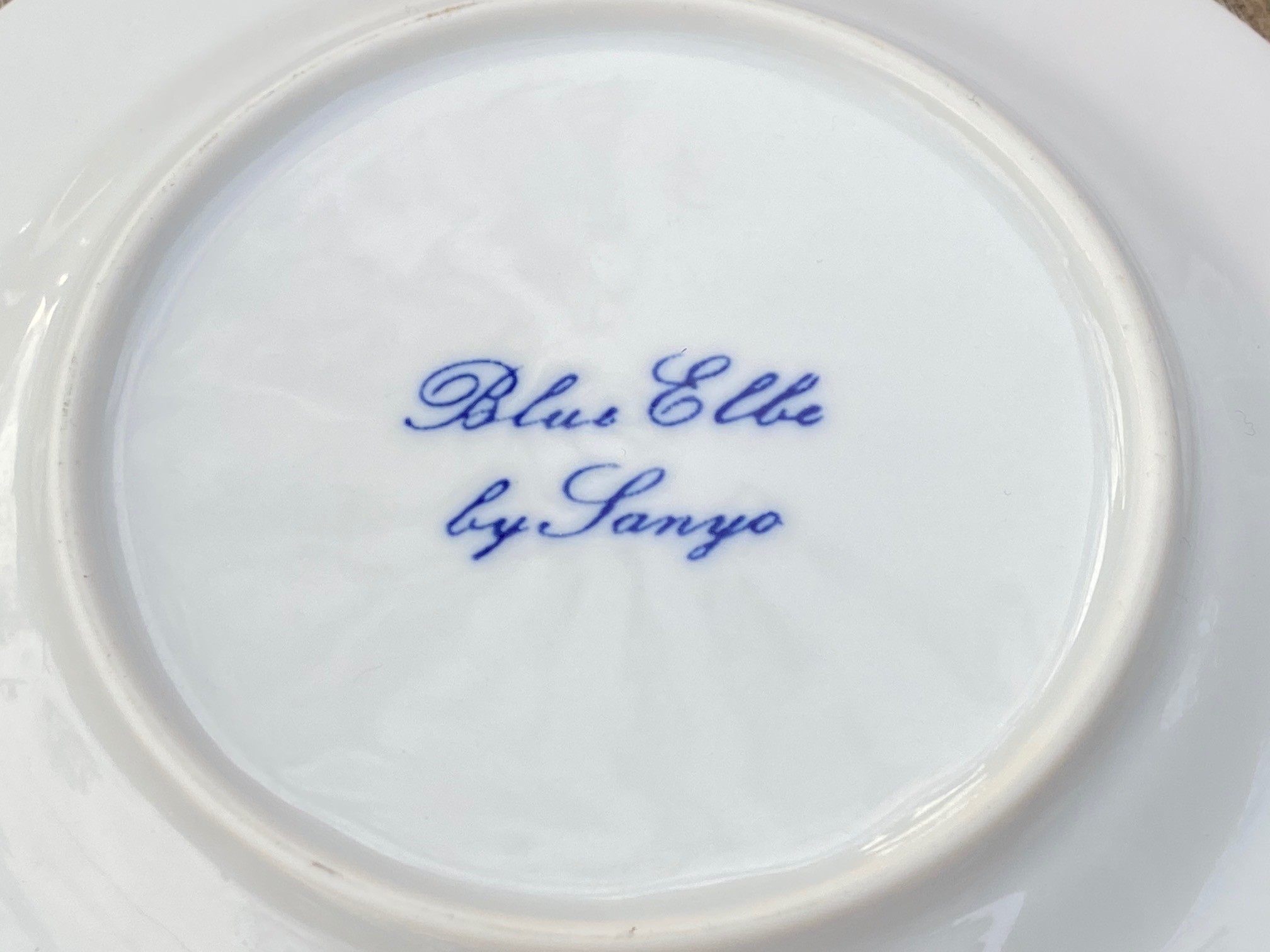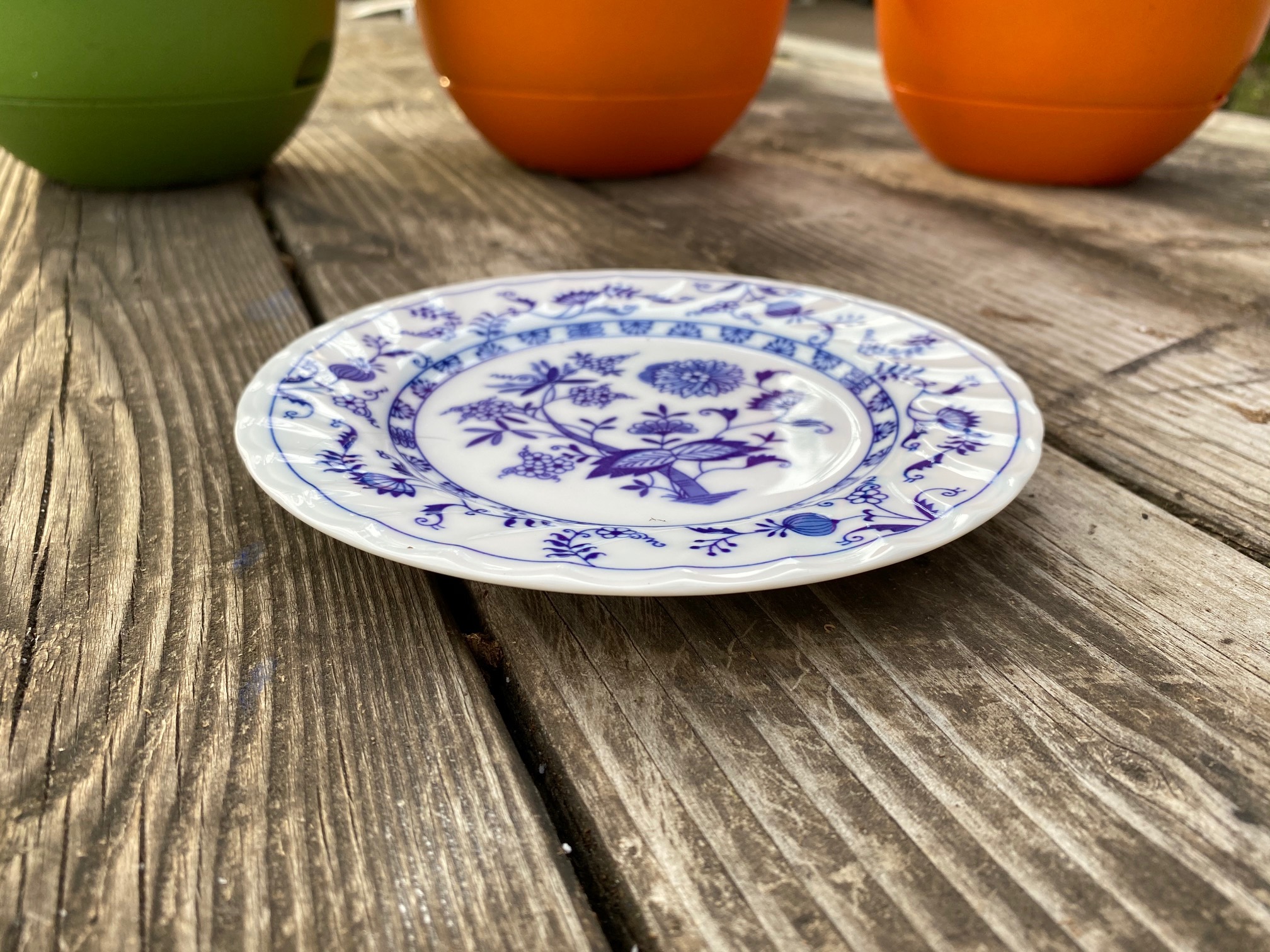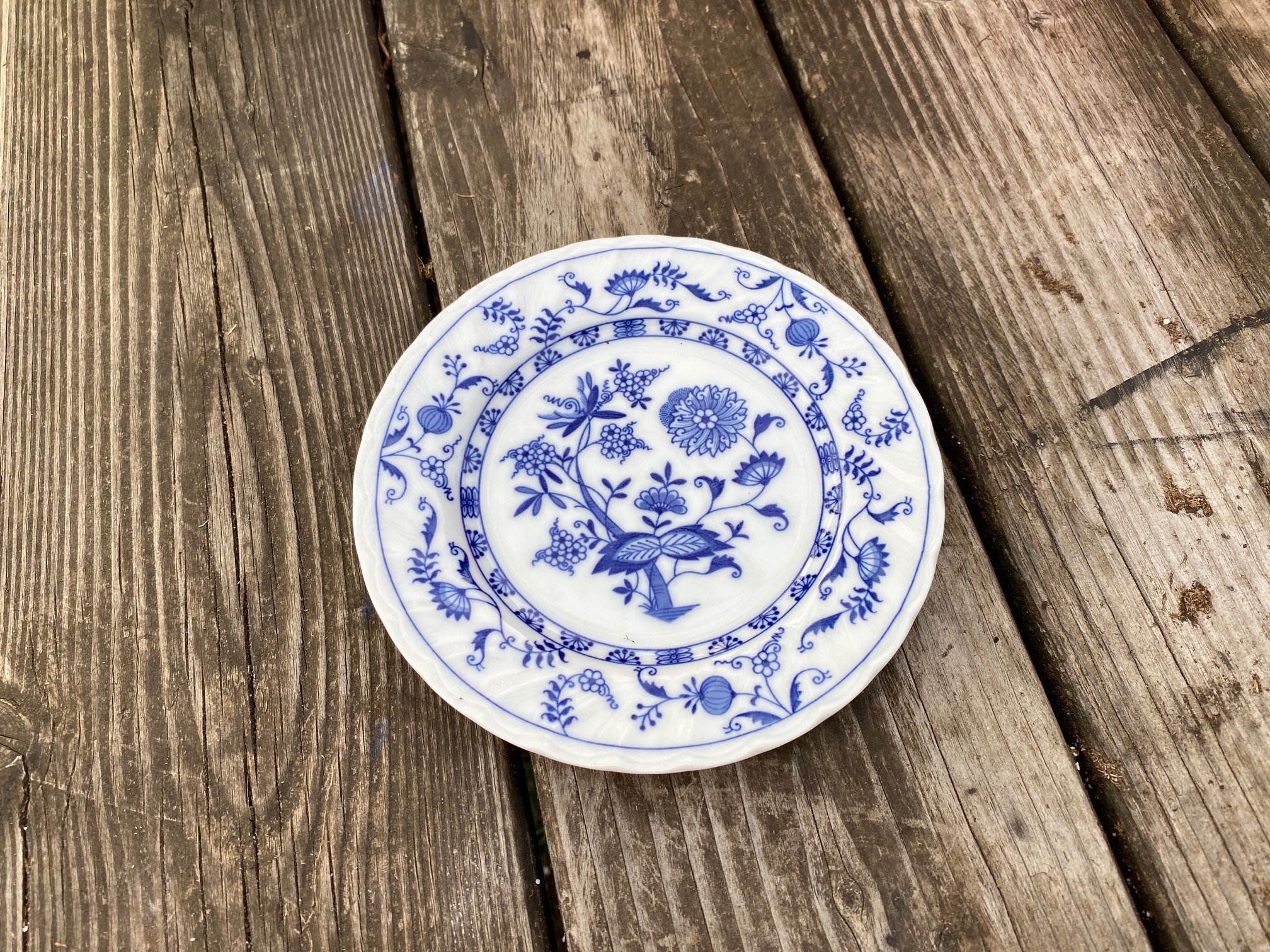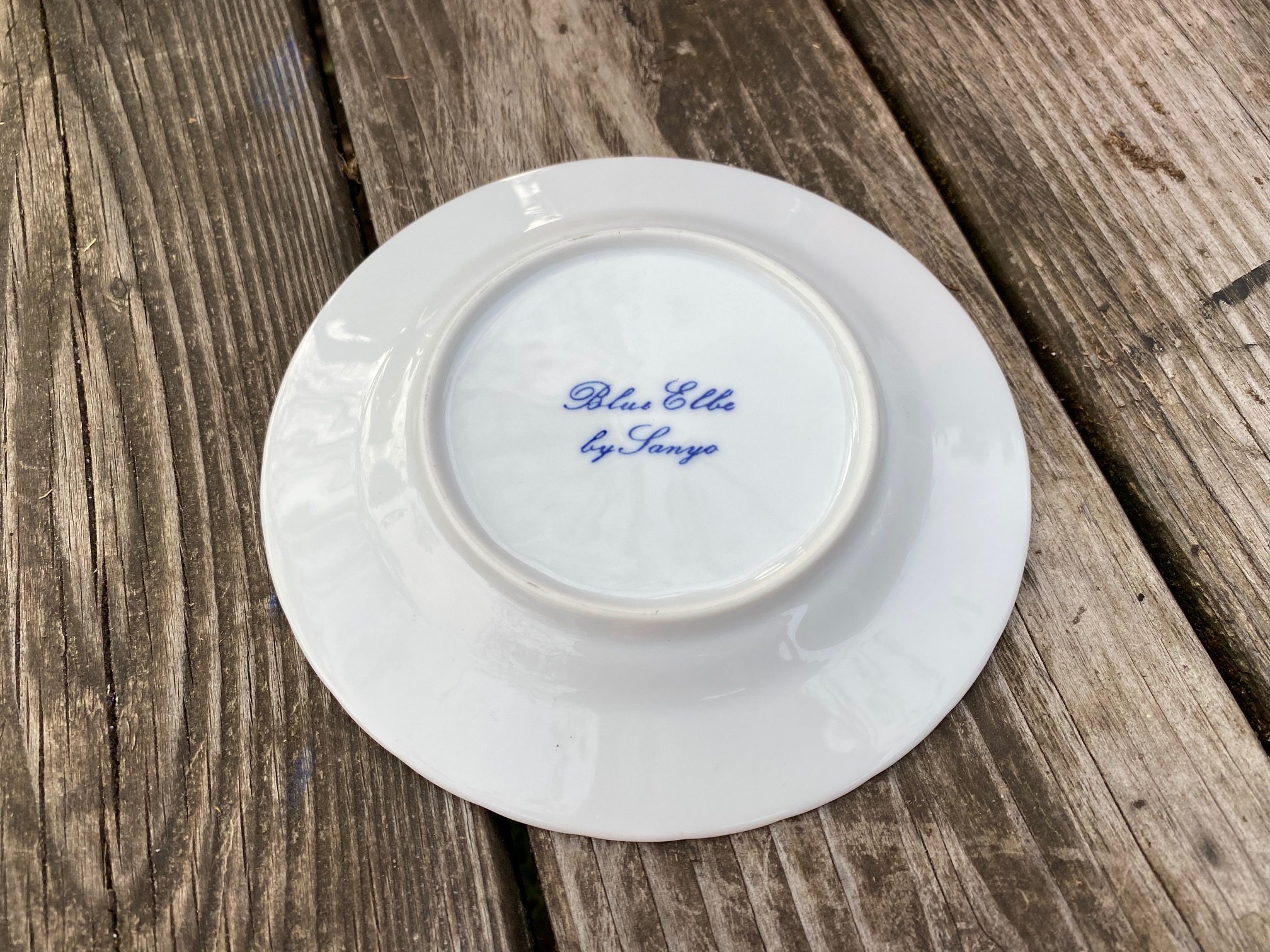Sanyo Saucer, Japan – c. 1993. Lead-free food surface – common with china made in Japan for the Japanese market.
Posted: Friday, March 20, 2020
Introduction: Tamara Rubin is an independent advocate for consumer goods safety, and she is also a mother of Lead-poisoned children. She began testing consumer goods for toxicants in 2009 and was the parent-advocate responsible for finding Lead in the popular fidget spinner toys in 2017. She uses high-precision XRF testing (a scientific method used by the Consumer Product Safety Commission) to test consumer goods for metallic contaminants – including Lead, Cadmium, Mercury and Arsenic.
Sanyo Blue Elbe porcelain dishes purchased c. 1993/1994 in Tokyo, Japan.
The full XRF test results of the small plate pictured are below (so please scroll down). Here are links to some additional reading that may be of interest, based on your interest in the test results of this item:
- Click here to see more vintage dishes I have tested.
- Click here to see more dishes with Lead that I have tested.
- Click here to see more “Made In Japan” items that I have tested.
- Click here to see more china made in Japan that I have tested.
#FunFact
Important Note:
- If a piece has the words “Made In Japan” written on the back – in English – that means it was most likely made for sale in the American market, and therefore is more likely to test positive for high levels of Lead (when using precision XRF technology.)
- When you look through the “Japanese China” category here on my blog, you can clearly see the different range of Japanese china. With some education it becomes fairly easy to tell — based on design, product qualities, and color usage — which items are true Japanese made for the Japanese domestic market and which are manufactured to export and sell in America. Start by scrolling through the Japanese China category here on this link.
Stay Safe Out There!
A quick note from Tamara
Hey readers – I hope you are staying well out there with all that is going on in the world right now. I’m hanging out mostly at home with my children – and have been doing so for about 10 days now. I pulled them out of school over a week ago – just to be safe. Each of my three youngest sons have compromised immune systems (which manifests in different ways for each of them), due to having been Lead-poisoned as babies.
In between kid-wrangling I am working hard to publish literally HUNDREDS of new posts (with test results for various consumer goods I have tested over the past couple of years, but have not yet had a moment to report on!). These posts have created a backlog in my system for more than a year now – and it’s actually nice to have a *break* with some time to catch up! To make this happen as quickly as possible, I am (as with this post) simply posting the images and the test results – without a lot of additional information. [Do not worry — I will continue to update them with more information as I get caught up and begin to have the time!]
For those new to my website, please check out the menu in the header of the website for more information about how I test things (and my background, etc.) On each post you can also click on any of the keyword tabs at the top of the post to find more items in that category. Here’s the post discussing the type of testing I do, and the specific instrument I use to detect, analyze and confirm metals content, and ultimately produce the resultant data for each item reported here – link.
Please Note: Test results reported below are science-based, accurate, and replicable. Test results reported here are from tests that were done for a minimum of 60 seconds each, and repeated multiple times, to confirm the results. As with all the testing reported here on my blog, a freshly-calibrated high-precision XRF instrument testing in Consumer Goods mode was used to test the item pictured here.
As always, please let me know if you have any questions.
Thank you for reading and for sharing my posts!
Tamara Rubin
#LeadSafeMama
Test results for the vintage small Sanyo plate, made in Japan pictured on this post:
Food Surface – focus on blue:
- Barium (Ba): 3,298 +/- 389 ppm
- Copper (Cu): 82 +/- 31 ppm
- Nickel (Ni): 66 +/- 35 ppm
- Iron (Fe): 1,471 +/- 134 ppm
- Bismuth (Bi): 60 +/- 16 ppm
- No tests were positive for Lead on food surface.
Back of dish – focus on white:
- Lead (Pb): 30 +/- 15 ppm
- Barium (Ba): 4,130 +/- 413 ppm
- Iron (Fe): 1,654 +/- 160 ppm
- Bismuth (Bi): 50 +/- 18 ppm
- 4 of 6 tests on back were negative for Lead and two were positive at similar levels – similar to the level noted above.
~ End of Post ~
Scroll down for additional photos of this item.


Never Miss an Important Article Again!
Join our Email List







My daughter-in-law loves the retro ironstone pottery that was made in Japan. I live in Australia so cant send any to you for testing due to cost of shipping. Have you done any testing on any of this type? I couldn’t see any that looked similar on site. I grew up in the 60s & 70s In the USA and remember my mom having some of this type.
I’ve just found your site today and am now bummed out because my mom had sent me all her Franciscan desert rose pottery, 12 place settings & large quantity of serving pieces. She passed away 10 yrs ago & wanted me to have it. I’ve only recently unpacked it & started using it every day. Oh well. I guess I’ll have to re-think that decision.
Thanks for this information.